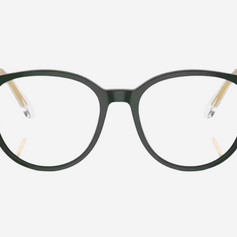Diabetes and Eyes
Diabetes mellitus is one of the most common systemic diseases in the world and it occurs when the pancreas does not produce enough insulin or when the body cannot effectively use that insulin. Elevation of blood glucose level or hyperglycaemia is a common effect of uncontrolled diabetes and over time this leads to damage to, and dysfunction and failure of many of the body’s organs including the eye.
Just by looking at your eye one cannot tell that a person with diabetes has eye problems, but still there are eye diseases that can affect diabetic people and can lead to vision loss. During the eye exam doctors can look into your eyes after dilating them and can check the condition of your eyes.
For any person, medical background is very important and Diabetes is also a major part of it. If you are diabetic you should inform the doctor about your medical condition so that the doctor can do the check accordingly. You should also plan to visit an eye doctor regularly, at least once a year because high blood sugar levels can lead to serious eye conditions like glaucoma, cataract, blurry vision and retinopathy. These eye conditions can also eventually lead to blindness.
In diabetes the crystalline lens inside our eyes loses water because of the high level of blood sugar in the anterior chamber, and therefore the prescription of their eye increases or fluctuates a lot.
A person with diabetes may also suffer with ruptured conjunctival blood vessels (irregular red patch in eye) due to the high blood sugar or a sudden rise in venous pressure such as coughing, straining, lifting, sneezing, or vomiting. If this happens to anyone they should go to the family doctor/ eye doctor right away. In this case, using the cold compresses followed by warm compresses right away may speed up recovery..
Diabetic retinopathy is another condition that a diabetic person may suffer. It is a prominent cause of vision loss around the world. Diabetic retinopathy affects more than 350 million individuals worldwide, particularly between the ages of 20 and 70 years, with an estimated 10,000 new cases of blindness annually in the United States. These numbers are projected to continuously increase as the diabetes mellitus increases.
Diabetic retinopathy is an eye condition that causes vision loss and blindness in people who have diabetes. It affects the blood vessels in the retina. Initially you may not have any symptoms but as it progresses, you may see floaters, blurred vision, fluctuating vision or vision loss. These conditions develop if you are not able to control your blood sugar level.
Other conditions like Glaucoma can also develop with Diabetic Retinopathy. Glaucoma is a condition that affects the optic nerve of your eye and because of that your peripheral vision is affected. It usually is associated with elevated Intraocular Pressure.
To make sure that your eyes stay healthy, a diabetic person should go for a complete comprehensive eye exam periodically every year. So that if the doctor sees onset of any conditions you can get the treatment right away.















